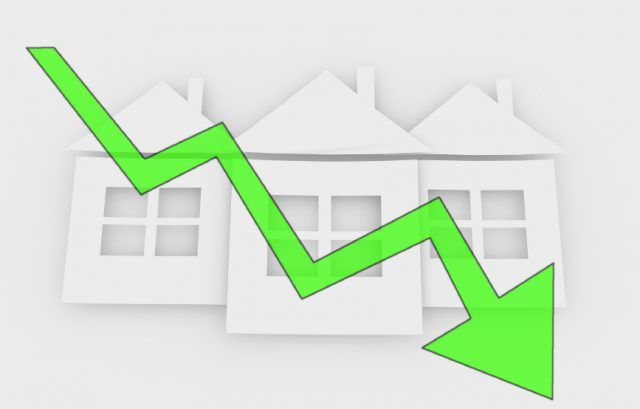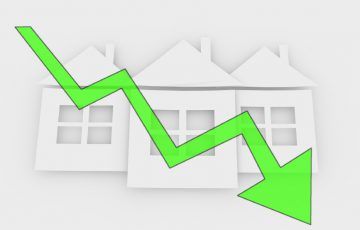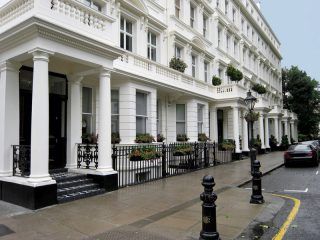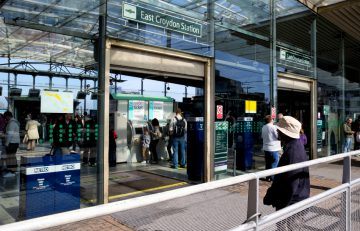House Prices Down in June on a Monthly Basis, Report Your Move and Reeds Rains
House prices were down by 0.2% on a monthly basis in June, according to the latest report from Your Move and Reeds Rains.
The estate agents have found that prices fell for the third consecutive month in June, with average values down by £2,358 in the past quarter. More than half of the unitary authority areas in England and Wales – 60 of 108 – reported a decline in house prices over the month. The average house price in June was recorded as £301,114.
Despite this, the broad trend over the past year remains a modest rise, with prices up by 3.8%, or £11,037, on June 2016. The East of England, in particular, continues to record strong annual growth, regaining the top spot among the regions. In London, the City of Westminster set a new peak price of £1,865,843, after rising by 19.7% over the last 12 months.
The slide in house prices has coincided with the period since the calling of the snap General Election in April, but Your Move and Reeds Rains don’t believe this to be the sole cause. For starters, they explain, the announcement in April was mid-month, which is too late to have any real impact on property sales. In addition, the result of the election looked in little doubt during this period.
Instead, the election and its outcome have merely exacerbated a slowdown in price growth that has been recorded since the beginning of the year, the agents claim.

House Prices Down in June on a Monthly Basis, Report Your Move and Reeds Rains
However, they insist that predictions of a sustained correction still look premature. Firstly, they have seen before that the market can rally, as it did after remaining flat for three months following last year’s EU referendum. Second, mortgage rates remain low, which is helping buyers. And, finally, transaction levels in June were encouraging, with an estimated 72,500 sales – up by 10% on May, which is marginally ahead of the increase expected, albeit with levels lower than last year.
On an annual basis, house price growth continues to be broad-based, with 87 of the 108 unitary authority areas in England and Wales recording price rises over the year to May 2017. Six out of ten regions have also seen an increase in annual rates from the previous month, with one recording no change.
Price growth was led by the East of England, which has regained the top spot for annual increases that it held earlier this year and for much of last year. Prices in the region rose by 0.3% over the month and are up by 6% annually, driven by strong growth in Norfolk (+10%), Luton (+7%) and Bedfordshire (+8%) – the latter being one of the 12 authorities to record a new peak in the month.
The East is also the area that has recorded the greatest increase in property transactions over the last two years. Sales in the city of Peterborough were up by 31% for the three months from March to May compared with the same period in the previous year.
The West Midlands, which led growth over the last quarter, has now fallen back into third place, with prices up by 4.9% annually – below both the East and South West. Annual growth in the latter now stands at 5.4%, with Bath and North East Somerset (+11.5%), Cornwall (+8.1%) and Devon (+7.7%) showing particularly strong growth.
The fastest growing area annually, however, was the Isle of Anglesey – up by 14.1%. While Pembrokeshire also recorded strong growth (+10.9%), Wales generally has fared less well, with prices up by just 2% year-on-year. Of the 21 areas where prices have dropped, Wales – with six – has the highest number.
Overall, annual house price growth in May across England and Wales stood at 4.3%, but a north-south divide seems to have re-emerged. Annual growth in the Midlands and south, excluding London, is above average, while the north and Wales are seeing below average growth.
In central London, prime property is back at the forefront of growth. While the slowdown in the overall market is reflected in Greater London, the capital’s prime property sector continues to show solid annual increases.
Average house prices in the capital decreased for the second consecutive month in May – down by £3,101, or 0.5%, to £613,650. In total, 25 out of London’s 33 boroughs saw prices fall. However, on an annual basis, it’s a different story. Over two thirds of London’s boroughs continue to show growth, with the average yearly increase standing at 3.4%.
It is prime property that now looks to be making the running in London, Your Move and Reeds Rains report. The City of Westminster reached a new peak in May (one of only three boroughs to do so) – up by 6.1% on a monthly basis and 19.7% year-on-year. It continues to close the gap with the highest priced borough – Kensington and Chelsea – despite it seeing the second strongest annual growth in London – up by 9.9%. Camden now completes the top three, with annual house price growth of 6.8% having pushed the average value up to £1,039,135.
The City of London, which Camden has replaced in third place over the last year, shows that growth is not consistent at the top of the market, however. Prices in the borough have dropped by 6.2% annually, while Hammersmith & Fulham – just below it in the table – is down by 5.4%. Islington, too, has recorded a substantial fall, with prices losing over £60,000, or 7.9%, in the year – the greatest annual decline in the capital.
On the other hand, Haringey, which is just inside the top third of the London market – with an average house price of £637,652 – has seen the strongest growth after Kensington and Chelsea, at 9.4%.
By contrast, London’s cheapest boroughs show more modest but consistent growth. The six cheapest boroughs have all seen annual house price growth, with Croydon (+5.2%) above the national average of 3.8%.
The Managing Director of Your Move and Reeds Rains, Oliver Blake, says: “Don’t write the market off just yet. We’ve seen three months of falls, but it’s far too early to panic. Mortgage rates are still affordable and the slowdown we have seen will already have helped some buyers struggling with affordability.
“We’re still seeing strong growth in the East and in prime London. We’re also seeing a return to the north-south divide in terms of price growth. In many ways, it feels like we’ve been here before.”








